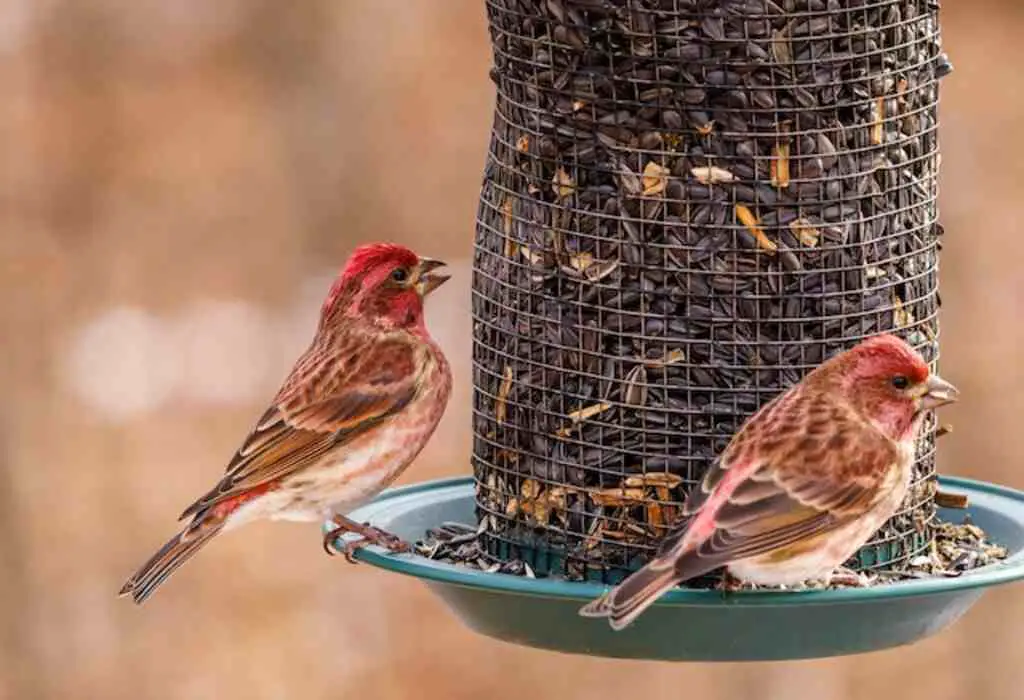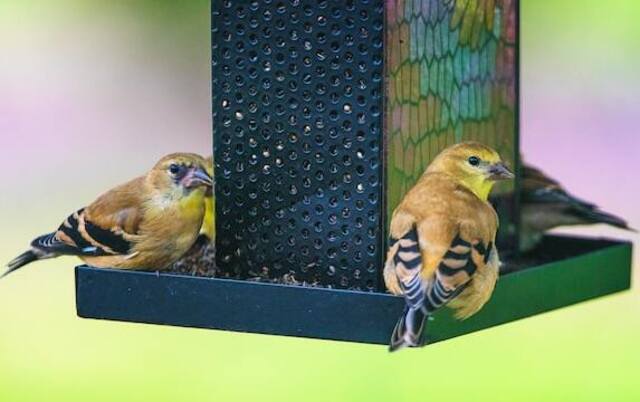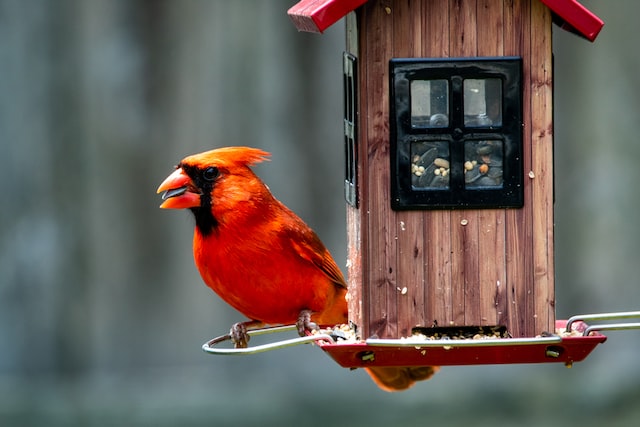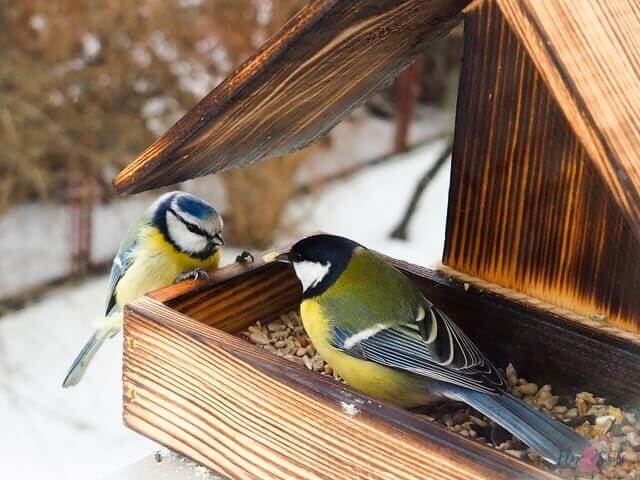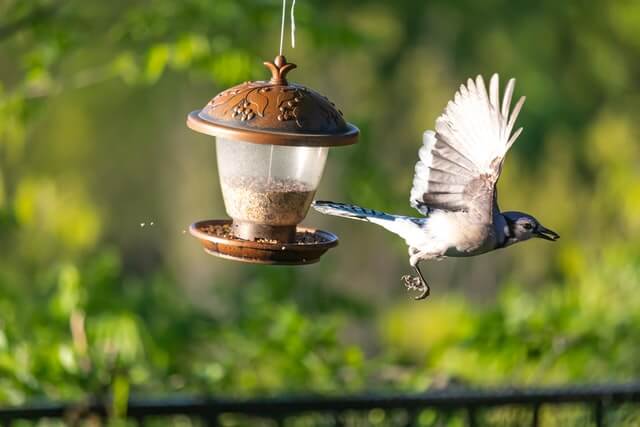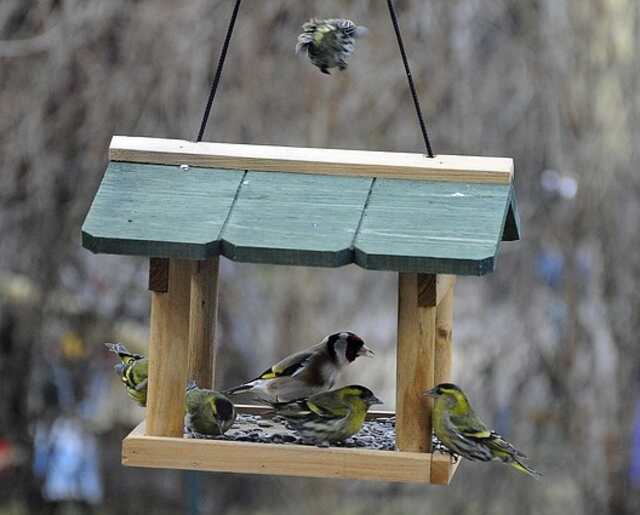Do Birds Attract Mice? Short answer: Yes, they do! But before you start picturing a grand alliance between feathered friends and mischievous rodents, let’s uncover the fascinating reasons behind this unexpected relationship.
From spilled seeds to cozy nests, we’ll explore why birds and mice can’t seem to resist each other’s company. Get ready for a captivating journey into the intertwined world of these critters!
Table of Contents
- 0.1 The Explanation of the Topic
- 0.2 The Importance of Understanding the Relationship between Birds and Mice
- 1 The Attraction Factor
- 2 The Role of Bird Feeders
- 3 The Role of Natural Predators in Deterring Mice from Bird Habitats
- 4 The Importance of Maintaining a Balanced Ecosystem
- 5 Conclusion
- 6 FAQs: Do Birds Attract Mice?
- 6.1 Do birds directly attract mice?
- 6.2 Why is it important to understand the relationship between birds and mice?
- 6.3 What are the factors that attract birds and mice to the same areas?
- 6.4 What food sources attract birds and mice?
- 6.5 What nesting habits attract both birds and mice?
- 6.6 How do water sources attract birds and mice?
- 6.7 How can I minimize the attraction between birds and mice?
- 6.8 Can certain types of bird feeders attract mice more than others?
- 6.9 How can natural predators deter mice from bird habitats?
- 6.10 Why is maintaining a balanced ecosystem important?
- 7 Author
The Explanation of the Topic
Birds are a highly visible and beloved part of many natural environments. From songbirds that fill our backyards with sweet melodies to majestic birds of prey that soar through the sky, these creatures are a symbol of beauty and freedom.
However, they can also create potential problems when it comes to attracting other animals such as mice. Mice are common rodents that can be found in almost all parts of the world.
They reproduce quickly and have an insatiable appetite for food, making them a frequent pest for homeowners and farmers alike.
They typically seek out sheltered areas where they can build nests, breed, and find sources of food.
While birds themselves do not directly attract mice, their habits create opportunities for these rodents to thrive in bird-friendly environments.
For example, bird feeders often contain spilled seeds that provide a ready-made food source for mice; nesting boxes offer cozy sheltered spaces that are perfect for mouse nests; bird baths or water features provide sources of fresh water which is essential for both birds and rodents alike.
The Importance of Understanding the Relationship between Birds and Mice
Understanding how birds attract mice is important because it helps us manage these two species in ways that benefit everyone involved.
When uncontrolled populations of either species occur due to improper management practices or habitat loss/change (e.g., deforestation), this can lead to negative impacts on ecosystems, resulting in imbalances that affect both wildlife and humans.
For example, if bird feeders are not cleaned regularly, they can attract rodents that carry diseases and can destroy property.
Similarly, if mice become too numerous, they can cause damage to crops or other vegetation which can have a cascading impact on local ecosystems.
Moreover, it is essential to manage this relationship properly because birds and mice serve important roles in the natural world.
Birds help control insect populations that could otherwise damage crops or spread disease; mice help fertilize soil by digging burrows and spreading seeds through their waste material.
Understanding the relationship between birds and mice is crucial for maintaining healthy ecosystems where both species thrive with minimal negative impact.
Stay tuned as we explore further how these two species interact in more detail.
The Attraction Factor
Birds and mice have a complex relationship where they are often in close proximity due to shared habitats. One key factor that brings them together is the availability of food sources.
Birds and mice are both attracted to similar types of food, such as seeds, nuts, and fruits. These types of foods are often found in bird feeders or scattered around bird habitats.
As a result, mice may be drawn to the same areas as birds in search of a meal. In addition to food sources, nesting habits also play a role in attracting both birds and mice.
Birds build their nests in trees and bushes, while mice often create nests in burrows or underground tunnels that can be found near these areas.
This means that if you have a bird feeder near your property or if you have trees and bushes on your land, there is a higher chance that mice may be present.
Another attraction factor between birds and mice is water sources. Both species require water for survival and will seek out places where it is available.
Bird baths or other sources of standing water can be an attractive location for both birds and rodents alike. It is important to note that not all species of birds will attract mice equally.
For example, certain species like hummingbirds primarily feed on nectar from flowers rather than seeds or nuts, which means they are less likely to attract rodents looking for food.
While it may seem impossible to prevent the attraction between birds and mice completely, there are steps you can take to minimize it.
Food Sources That Attract Birds And Mice
Birds are drawn to many types of food sources including sunflower seeds, millet seed mixtures, suet cakes made with rendered animal fat mixed with seeds (such as peanuts) among others; these foods can attract rodents like mice who seek out similar nutrition for survival purposes as well.
Mice will eat anything, but they have preferences for certain types of food. They often prefer high-calorie foods like nuts, seeds, and fatty foods such as peanut butter and cheese.
Mice will also eat fruits, vegetables, and grains. Therefore, if you have a bird feeder nearby with these types of food sources, it is likely that mice will be attracted to the area.
Nesting Habits That Attract Both Species
Birds and mice also have similar nesting habits. Birds typically build their nests in trees and bushes to protect their young from predators, while mice create burrows or tunnels underground to keep their young safe from predators as well.
If you have trees or bushes on your property or even birdhouses nearby providing shelter for birds, there could be a chance that mice are attracted to these areas.
Water Sources That Are Attractive To Both Birds And Mice
Water is essential for both birds and mice; thus if there’s an available water source in your yard like a bird bath or swimming pool without proper coverage this can be an open invitation for rodents looking for a drink.
Minimizing The Attraction Between Birds And Mice
To minimize the attraction between birds and mice, it’s recommended that you remove any potential food sources for rodents in the area surrounding bird habitats such as feeders or birdbaths to drastically decrease the chance of rodent infestations.
You can also create physical barriers around bird feeders, such as hanging them higher up off the ground away from trees or other structures that may attract rodents.
Furthermore, setting snap traps around suspected mouse entrances (or other areas where they are known to frequent) can help prevent infestations before they start.
While it may be difficult to eliminate all attraction between birds and mice completely given their overlapping needs in terms of food sources, water access points and sheltered nesting options.
Taking proactive steps can go a long way in reducing the chances of unwanted infestations.
The Role of Bird Feeders
Bird feeders are a popular way to attract birds to your yard, but they may also attract unwanted guests such as mice. Mice are attracted to bird feeders because they provide a steady source of food.
In this section, we will discuss the different types of bird feeders that may attract mice and ways to prevent or minimize mouse attraction at bird feeders.
Types of Bird Feeders That May Attract Mice
Certain types of bird feeders are more likely to attract mice than others. Platform and tray feeders that are placed directly on the ground or low surfaces can make it easy for mice to access the food. Tube feeders with large openings can also be problematic as mice can easily climb up them and reach the food inside.
Additionally, certain types of birdseed, such as millet and sunflower seeds, are more attractive to mice than others. Mice prefer seeds that have a high oil content and are easily accessible.
Ways to Prevent or Minimize Mouse Attraction at Bird Feeders
One way to prevent mouse attraction at bird feeders is by using a squirrel-proof feeder. Squirrel-proof feeders often have mechanisms in place that prevent both squirrels and mice from accessing the food.
Another option is to elevate your bird feeder off the ground or use a pole-mounted feeder. This makes it more difficult for mice to reach the food source.
Using certain types of birdseed can also help minimize mouse attraction. Black oil sunflower seeds have a low oil content and are less attractive to both squirrels and mice.
Regularly cleaning your feeder can help reduce odors that may attract rodents. Emptying any uneaten seed on a daily basis will discourage pests from moving into your yard.
By taking these steps, you can enjoy feeding birds without attracting unwanted pests like mice. Properly maintaining your bird feeders will also help keep your yard healthy for your avian visitors.
The Role of Natural Predators in Deterring Mice from Bird Habitats
Natural predators such as hawks, owls, and snakes play a crucial role in deterring mice from bird habitats. These predators are known to prey on rodents, including mice, and can help control their population.
When natural predators are present in an ecosystem, they create a sense of fear among smaller animals like mice, which encourages them to seek shelter elsewhere.
One of the most effective natural predators for controlling the mouse population is the barn owl.
Barn owls are known to hunt small rodents at night and have been found to be particularly efficient in controlling rodent populations around agricultural areas.
Studies have shown that a single barn owl can consume up to 3,000 rodents per year and can significantly reduce the number of mice present in an area.
Hawks also play a significant role in controlling the mouse population in bird habitats.
Hawks are known for their sharp vision and agility, which make them excellent hunters. They hunt during the day and target small mammals such as mice.
The presence of hawks or other birds of prey like eagles can create a sense of fear among smaller animals like mice, which helps keep their population under control.
Snakes are also natural predators that help control rodent populations by preying on them.
Snakes such as garter snakes or rat snakes feed on small rodents like mice and help reduce their population.
Although some people may find snakes scary or intimidating, they play an essential role in maintaining a balanced ecosystem.
The Importance of Maintaining a Balanced Ecosystem
Maintaining a balanced ecosystem is crucial for both birds and other small animals like mice. A balanced ecosystem helps prevent overpopulation of any one species while ensuring that all species have enough resources to thrive.
When one species overpopulates an area due to lack of natural predators or other factors, it can have a significant impact on the entire ecosystem.
For example, if the mouse population were to increase significantly due to lack of natural predators, they could cause damage to crops or other vegetation in the area.
The increased population could also lead to an increase in diseases carried by rodents.
The presence of natural predators helps prevent overpopulation and ensures that all species have enough resources to thrive.
When mice are kept under control, they are less likely to cause damage or spread diseases, and birds can safely coexist with them in their habitats.
Natural predators play a vital role in controlling rodent populations and preventing overpopulation of any one species.
The presence of hawks, owls, snakes and other predators helps maintain a balanced ecosystem where all species can coexist without causing harm to each other.
By understanding the relationship between birds and mice and the role of natural predators, we can work towards creating a healthy and sustainable environment for all living organisms.
Conclusion
The relationship between birds and mice is complex and multifaceted. While it is true that birds can attract mice to certain habitats, there are also many factors that can deter or minimize mouse attraction.
Understanding the dynamics of this relationship is crucial for creating healthy and sustainable bird habitats, as well as for maintaining a balanced ecosystem overall.
Summary of Key Points
Throughout this article, we have explored various aspects of the relationship between birds and mice. We first discussed the different factors that can attract both species to a habitat, including food sources, nesting habits, and water availability.
We then examined how bird feeders can play a role in attracting mice, as well as strategies for minimizing mouse attraction at these feeding sites.
We also looked at how natural predators such as hawks, owls, and snakes can help control mouse populations in bird habitats by keeping their numbers in check.
We discussed the importance of maintaining a balanced ecosystem where all species can thrive in harmony.
Final Thoughts on the Relationship Between Birds and Mice
Overall, it is clear that the relationship between birds and mice is complex and dependent on many factors.
While it may be tempting to view mice as pests or nuisances that should be eliminated from bird habitats altogether, it is important to remember that they too have important roles to play in our ecosystems.
In fact, studies have shown that when mouse populations are removed from an ecosystem entirely (as has been attempted in some cases), this can lead to unexpected consequences such as increased levels of Lyme disease due to changes in tick behavior.
Therefore, instead of trying to eradicate mice from bird habitats entirely, our focus should be on creating healthy environments where all species can coexist peacefully.
By understanding the dynamics of the relationship between birds and mice and taking appropriate measures to control mouse populations as needed, we can create thriving ecosystems that benefit us all.
Together, let us embrace the complexity of nature and work to build a future where all creatures great and small can flourish.
FAQs: Do Birds Attract Mice?
Do birds directly attract mice?
While birds themselves don’t actively attract mice, their habits and habitats provide opportunities for rodents to thrive, such as spilled bird seeds and cozy nesting spaces.
Why is it important to understand the relationship between birds and mice?
Understanding this relationship helps manage both species effectively, preventing negative impacts on ecosystems, property damage, and disease transmission.
What are the factors that attract birds and mice to the same areas?
Birds and mice are attracted to similar food sources like seeds, nuts, and fruits. Additionally, nesting habits and water sources play a role in bringing them together.
What food sources attract birds and mice?
Birds are drawn to sunflower seeds, millet seed mixtures, and suet cakes. Mice prefer high-calorie foods like nuts, seeds, and fatty options such as peanut butter and cheese.
What nesting habits attract both birds and mice?
Birds build nests in trees and bushes, while mice create burrows or tunnels underground. Having trees, bushes, or birdhouses on your property may attract both species.
How do water sources attract birds and mice?
Bird baths or other standing water sources are attractive to both birds and rodents, as they require water for survival.
How can I minimize the attraction between birds and mice?
Remove potential food sources like spilled seeds and clean bird feeders regularly. Create physical barriers around feeders, and use snap traps or other preventive measures around areas frequented by mice.
Can certain types of bird feeders attract mice more than others?
Platform and tray feeders placed on the ground or low surfaces, as well as tube feeders with large openings, can make it easier for mice to access the food.
How can natural predators deter mice from bird habitats?
Natural predators like hawks, owls, and snakes prey on mice, creating fear that encourages them to seek shelter elsewhere. Barn owls are particularly efficient in controlling rodent populations.
Why is maintaining a balanced ecosystem important?
A balanced ecosystem prevents overpopulation, damage to crops, and disease spread. Natural predators play a vital role in controlling rodent populations, ensuring all species can coexist harmoniously.

